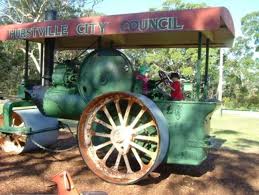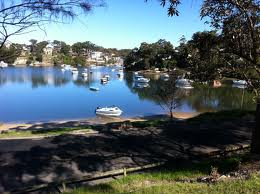Oatley Park, New South Wales facts for kids

Oatley Park is a large nature reserve in southern Sydney, Australia. It covers about 112 acres (45 ha) of land. The park sits on a piece of land that reaches into the Georges River. It is surrounded by the Georges River, Lime Kiln Bay, and Jew Fish Bay. Inside the park, you will find beautiful natural bushland, calm waterways, a fun children's playground, and a sports oval. Oatley Park is a very popular spot for picnics, playing sports, and enjoying the outdoors.
Park History
There is proof that Aboriginal people lived in this area a long time ago. You can still see some of their rock carvings and piles of shells (called middens) in the park today.
The land for Oatley Park was set aside for public fun in 1887. It officially became a public park in 1888. At first, it was known as Peakhurst Park. In 1922, its name was changed to Oatley Park. Even back then, people knew it was special because it was one of the few big waterfront areas not owned by private people.
In 1919, a special tree was planted near the park's main entrance. It was a Turkish Pine grown from a seed. This seed came from the famous Lone Pine on the Gallipoli Peninsula in Turkey.
The sandy bay in Oatley Park has always been a favorite swimming spot for local people. Swimming baths were built there, and they were used as early as 1919. The Oatley Swimming Club started in 1927, helping people enjoy the water even more.
During the 1930s, when many people were out of work, a lot of building happened in the park. A scenic road was built along the river's edge. Also, a small shop (kiosk) and a cool tower that looks like a castle were built. These were made to attract more visitors to the park. Many paths and lookouts were also created, offering amazing views of the river.
During World War II, some Australian soldiers stayed in Oatley Park for a short time. They set up temporary buildings like tents and kitchens. You can still see some concrete floors and stone steps from their camp today.
Plants and Animals
Oatley Park is known as one of Sydney's best natural bushland areas. It is home to many different trees, shrubs, and native flowers. The park also has lovely river beaches and lots of birds.
- Over 310 types of plants have been found here. The park helps protect many plant species that are not found anywhere else nearby.
- 107 different kinds of birds have been seen in the park. It is an important safe place for both birds that live here all year and birds that migrate.
- Many types of reptiles, like snakes and lizards, live in the park.
- Possums are the most common mammals. But the park also has bats, swamp wallabies, and echidnas.
Park Features and Fun Activities
Oatley Park is popular with visitors all year. People enjoy many different activities here. You can have picnics in Steamroller Park, swim in the Baths at Sandy Bay, or explore the many walking and cycling paths. The Oatley Park Castle can even be rented for special events like weddings.
Here are some of the main things you can find in Oatley Park:
- Castellated Tower: This is the 'Castle' building, with a barbecue area and a lookout on top.
- Oatley Park Oval: A large sports field used by cricket and soccer clubs.
- Steamroller Park: This area has an old, historic steamroller and a playground for kids.
- Sandy Bay: A beautiful bay with a pier and a swimming area called Oatley Baths. It's home to the Oatley Swimming Club.
- Lime Kiln Wetlands: This area features mangroves and a series of ponds. You can often see ducks and other water birds here.
- Myra Wall Garden: A garden built in 1964 to honor a local person who cared about nature.
- Websters and Hills Peak Lookouts: These spots offer great views over Jew Fish Bay and Lime Kiln Bay.
- Draculas Canteen: A large rock overhang that's fun to explore.





